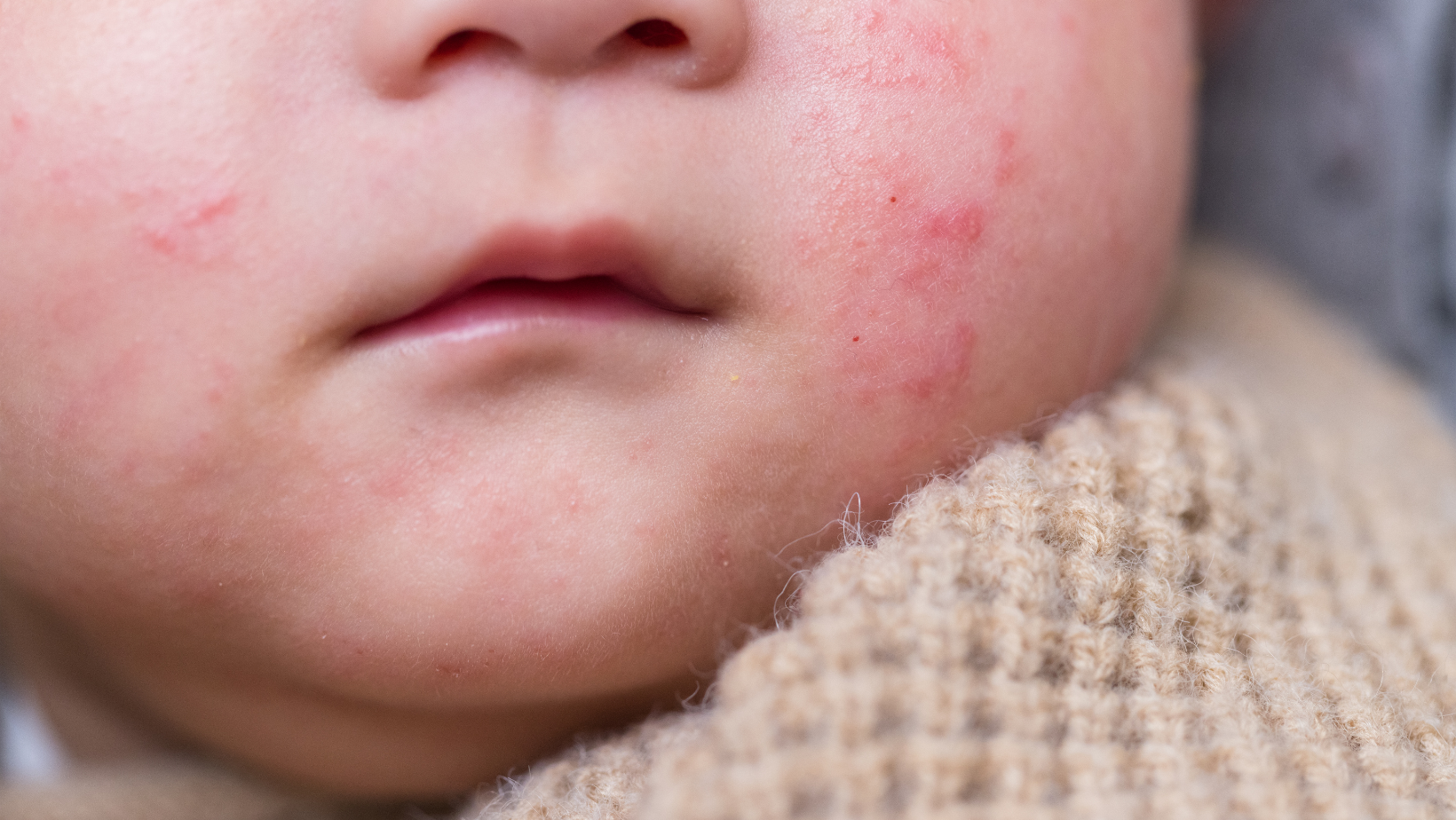Many types of newborn skin conditions and birthmarks exist, including heat rash, erythema toxicum, newborn acne, hemangioma, nevus simplex, Mongolian spot and many more!
When a baby is born, frequently parents note the presence of rashes or birthmarks in different locations that are sometimes pinkish, reddish or even purplish. Some marks will appear in the days following birth, which will make parents falsely think that they bumped their baby causing the mark. But no, often different pale pink pigmentations become more apparent, becoming darker pink, then red when the baby’s blood starts to circulate independently.
This is the case for hemangioma, which usually disappears over the years. It can be raised, bumpy, thus the name “strawberry hemangioma” (infantile hemangioma), and is associated with a vascular proliferation (fast growth of vessels). About 30%-50% of marks are apparent at birth, and when your child cries, you shouldn’t be surprised to see the mark’s colour deepen. Your child’s physical effort activates their blood circulation. Even if it grows within the first couple of years, it should shrink, disappearing after one year for 10% of children, two years for 20%. For the majority, it will disappear after 2-3 years, but it may take up to 8-9 years (90% reabsorbed) in some instances. While they’re not dangerous, ophthalmology and ENT monitoring should occur if the hemangioma is found near the eyes or ears.
Birthmarks will be apparent at birth, vary in size and location, and are very dark red. These usually remain stable as they grow, but seem to expand given the child’s skin stretches as they develop. These marks are often permanent, but with today’s technology, you can diminish or eliminate them in some instances, often with lasers.
After birth, you can also sometimes note redness on the baby’s nape and back of the head. It’s also dark with a standard contour for about 50% of newborns. This is known as nevus simplex and is sometimes called “stork bite” or “angel’s kiss.” It’s caused by dilated blood vessels, an increase in surface vessels that give the skin a reddish colour. Since little body fat is present in these spots, you will see more redness. You don’t need to get treatment for nevus simplex as 95% of the marks will shrink within two years, though some may take longer. It will remain permanently in rare cases. Many parents will never note the presence of nevus simplex if their baby is born with a full head of hair, hiding it.
If your baby has many pimples on their face, it’s often because the child is too warm. Heat escapes from the baby’s head, and when they’re overdressed, their body heat rises to their face, they become redder, then the pimples pop out. This is what is commonly known as “heat rash,” and when you reduce the baby’s layers of clothing, the problem will disappear within a few days. Erythema toxicum is a rash made up of tiny reddish dots rather than pimples. Newborn acne is characterised by small, sometimes red pimples, alone or in bunches, which may have whiteheads. This is caused by the freeing of toxins by the skin, heat, and sometimes the baby’s skin is sensitive to products such as soaps or lotions. All these conditions are temporary and aren’t harmful.
Mongolian spots often occur on the back or the buttocks. They’re delimited and scare parents because they’re grey or blue. They usually occur in children whose parents have darker skin tones (Asian or black). They usually disappear within two years after birth.
Other related articles:
Related videos:
That’s all for today’s article! Please share your experiences with your baby!
Talk soon,
Marie
The Baby Expert


